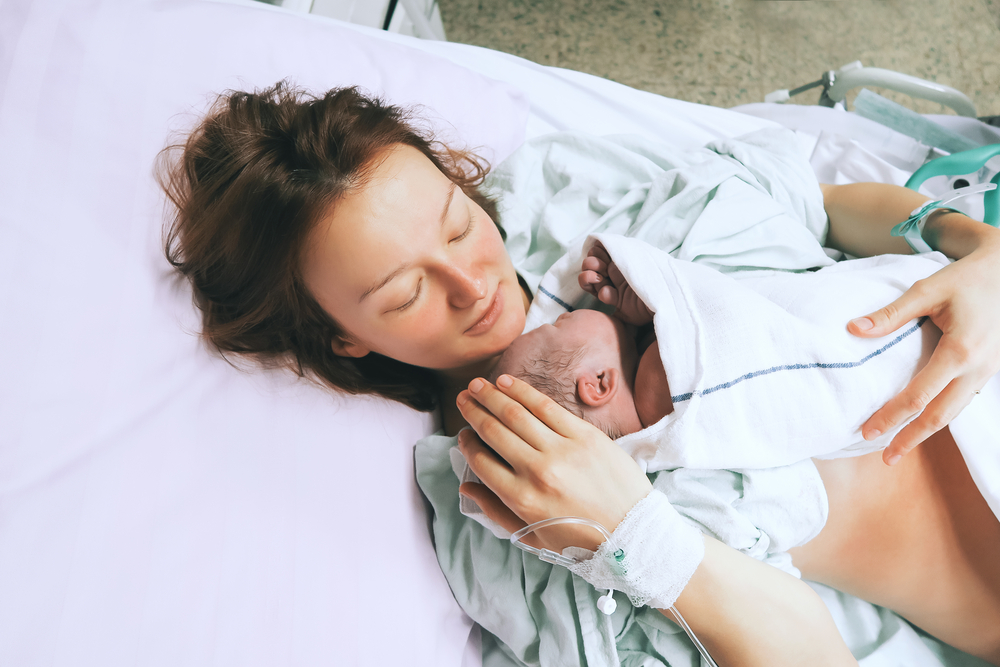German Study Urges Newborn SMA Screening, Citing Better Outcomes

Newborn screening can aid in the early diagnosis and prompt treatment of spinal muscular atrophy (SMA), which can lead to better clinical outcomes, according to a German study.
“We strongly recommend that newborn screening for SMA ought to become universal in countries that provide SMA-specific medication,” the study’s researchers wrote.
The study, “Newborn screening for spinal muscular atrophy in Germany: clinical results after 2 years,” was published in the Orphanet Journal of Rare Diseases.
SMA is caused by mutations in the gene SMN1, ultimately leading to the progressive death of nerve cells that control movement. In the last five years, several disease-modifying treatments have become available that can slow or even halt the death of nerve cells.
Notably, however, lost nerve cells cannot be regrown, which is why it is critical for SMA treatment to be initiated before the disease has substantially progressed.
Newborn screening (NBS), as its name suggests, involves testing newborns for SMA by doing genetic testing for SMN1 mutations soon after babies are born. NBS for SMA is becoming more common — but babies born in many European countries do not have access to it. That has led to calls to introduce such screening universally in the near future.
In the new study, a team of researchers in Germany reported on the results of an SMA newborn screening program based on dried blood spot samples. Of nearly 300,000 babies screened in the country, 43 were diagnosed with SMA — a birth prevalence incidence of 1:6,910 — which is about what would be expected given what is known about the commonality of the disease.
“Until now, no SMA case missed by NBS has been detected,” the researchers wrote, noting the screening’s effectiveness.
Among the diagnosed babies, an initial positive screening result was reported a median of six days after birth. This prompted a second test to confirm the diagnosis — babies were definitively diagnosed after a median of two weeks.
The babies also underwent SMN2 testing. SMN2 is a gene that can partially compensate for mutated SMN1. Different people have different numbers of SMN2 copies, but in general, more copies of SMN2 correspond to less severe SMA. Of the 43 babies, 17 — about 40% — had two SMN2 copies, while 10 had three copies. The rest of the infants had four or five copies.
The babies with two SMN2 copies would be expected to have the most severe disease. A total of 15 of these infants were given the disease-modifying treatment Spinraza (nusinersen, marketed by Biogen) within weeks of birth.
About half of these treated babies had no symptoms before the therapy and have so far remained completely symptom-free. The other half had subtle symptoms shortly after birth. In these children, symptoms improved with treatment, though developmental motor milestones were delayed. None of them developed respiratory symptoms.
The two other children with two SMN2 copies who did not receive treatment — one due to a familial decision and one because of cost issues — died due to respiratory failure before they were 6 months old.
Similarly, among the 10 babies with three SMN2 copies, six who were promptly treated with Spinraza have remained symptom-free so far. In contrast, babies who did not get the treatment have developed symptoms.
“This study shows that the identification of newborns with infantile SMA will lead to a substantial improvement in neurological outcome if prompt SMA-specific medication can be provided,” the researchers wrote.
“The fact that all pre-symptomatically treated patients, even with 2 SMN2 copies, have shown normal motor development so far, is a clear argument that pre-symptomatic therapy may prevent the death of motor neurons,” they wrote.
“The opposite was also true, all untreated children in this study with 2 or 3 SMN2 copies have consistently developed infantile SMA,” the researchers added.
People with SMA who have four or more copies of SMN2 typically do not experience symptoms until later in life, so for most of these patients a strategy of “watchful waiting” was implemented.
Notably, in addition to babies directly diagnosed through NBS, there were a few instances of babies’ test results prompting additional testing in older siblings who had not undergone NBS but were experiencing symptoms of SMA. This led to SMA diagnoses in two affected siblings.
Based on the results, “we strongly recommend the implementation of a genetic SMA screening in existing NBS structures where SMA-specific therapy is available,” the researchers concluded.
“When implementing SMA in a public screening program, it must be ensured that affected children are treated, and treated on time without much delay due access problems. … This saves time, is likely to reduce the stress of the affected families and avoids the unnecessary consultation of medical centers that are either not specialized or unable to provide pharmacotherapy,” they added.







